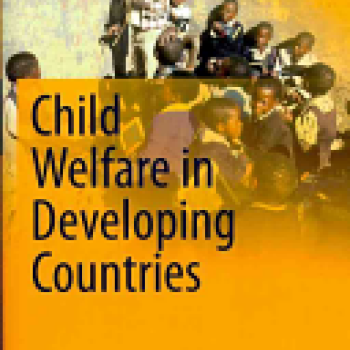Publication Information

Government, non-government, and donor organizations have developed a social assistance program known as Productive Safety Net Program (PSNP) which has two sub-programs namely public work program (PWP) and Direct Support Program (DSP). PSNP is designed to reduce the vulnerability of poor people to drought and it targets household and in most cases without considering ex ante the issue of intra-household resource distribution. This paper assesses, using Young Lives Survey data, the impacts of the Productive Safety Net Program (PSNP) and the Agricultural Extension Program (AEP) on time use between work and schooling as well as highest grade completed by 12-year-old children in rural and urban Ethiopia. Empirically the study used propensity score matching techniques to estimate the impact of PSNP and AEP on child welfare measured by time use in various types of work, schooling, and studying. We found that PWP in rural areas increases child work for pay, reduces children?s time spent on child care and household chores and total hours of time children spent on work all kind of work combined, and increases girls spending on study. The DSP in rural and urban areas reduces time children spent on paid and unpaid work, and increases the highest grade completed by boys in urban areas. On the other hand, AEP in rural areas was effective in reducing child work for pay and total work, increasing time girls spent on schooling and highest grade completed by girls.
Reference: Woldehanna, Tassew. 2010. Productive Safety Net Programme and Children's Time Use between Work and Schooling in Ethiopia. In John Cockburn and Jane Kabubo-Mariara (eds.) Child Welfare in Developing Countries, pp. 157?209. International Development Research Centre, Springer, Ottawa.

Government, non-government, and donor organizations have developed a social assistance program known as Productive Safety Net Program (PSNP) which has two sub-programs namely public work program (PWP) and Direct Support Program (DSP). PSNP is designed to reduce the vulnerability of poor people to drought and it targets household and in most cases without considering ex ante the issue of intra-household resource distribution. This paper assesses, using Young Lives Survey data, the impacts of the Productive Safety Net Program (PSNP) and the Agricultural Extension Program (AEP) on time use between work and schooling as well as highest grade completed by 12-year-old children in rural and urban Ethiopia. Empirically the study used propensity score matching techniques to estimate the impact of PSNP and AEP on child welfare measured by time use in various types of work, schooling, and studying. We found that PWP in rural areas increases child work for pay, reduces children?s time spent on child care and household chores and total hours of time children spent on work all kind of work combined, and increases girls spending on study. The DSP in rural and urban areas reduces time children spent on paid and unpaid work, and increases the highest grade completed by boys in urban areas. On the other hand, AEP in rural areas was effective in reducing child work for pay and total work, increasing time girls spent on schooling and highest grade completed by girls.
Reference: Woldehanna, Tassew. 2010. Productive Safety Net Programme and Children's Time Use between Work and Schooling in Ethiopia. In John Cockburn and Jane Kabubo-Mariara (eds.) Child Welfare in Developing Countries, pp. 157?209. International Development Research Centre, Springer, Ottawa.

